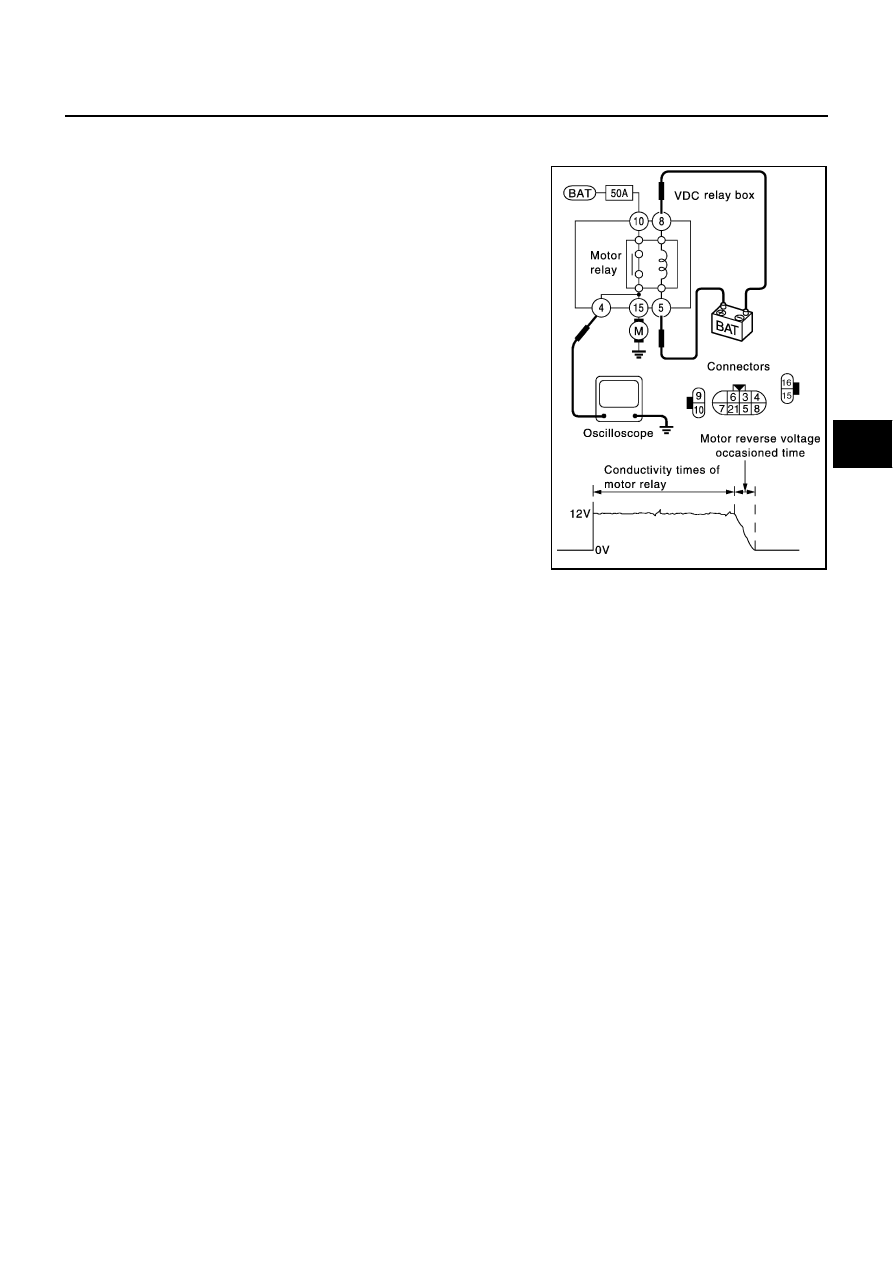Infiniti G35 (V35). Manual - part 248

TROUBLE DIAGNOSIS FOR SYSTEM
BRC-53
[VDC/TCS/ABS]
C
D
E
G
H
I
J
K
L
M
A
B
BRC
VDC/TCS/ABS ACTUATOR
Actuator Operation Inspection
1.
Turn ignition switch OFF, apply a voltage of 12 V between VDC
relay box connector E47 terminal 5 and 8, use an oscilloscope
to measure motor voltage at this time (between terminal 4 and
ground), and check motor reverse voltage occurrence time
when operation is stopped.
CAUTION:
●
Above check should be performed after motor relay unit
inspection to make sure relay operates normally.
●
To prevent overheating, do not drive actuator motor more
than 4 seconds.
●
Motor reverse voltage occurrence time is standard when
battery voltage is 12 V and the air temperature is 20
°
C
(68
°
F), and this time is a little shorter when battery voltage
is low or the air temperature is low.
Motor reverse voltage occurrence time:
0.1 second or more
SFIA0690E